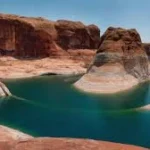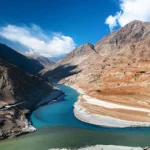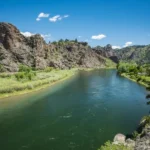
Boracay Island, a stunning tropical paradise in the Philippines, is renowned for its white sandy beaches, crystal-clear waters, and vibrant culture. This small island draws millions of tourists each year, offering a unique blend of natural beauty and rich local traditions. From visa-free access for many international travelers to its lively festivals and stunning sunsets, Boracay has much to offer. In this overview, we’ll explore some interesting facts about this popular destination that highlight its appeal and significance.
Location: Boracay is situated in the Western Visayas region of the Philippines, approximately 315 kilometers (196 miles) south of the capital city, Manila. It lies between the Sibuyan Sea and the Visayan Sea and is part of the province of Aklan. Its strategic location makes it easily accessible from major urban centers in the Philippines, contributing to its popularity as a tourist destination. The island is also surrounded by smaller islets and offers stunning views of the surrounding waters.
Size: Boracay spans about 7 kilometers (4.3 miles) in length and is about 1 kilometer (0.62 miles) wide at its narrowest point. Despite its small size, the island is packed with attractions and activities, making it a vibrant hub for both relaxation and adventure. The compact nature allows visitors to explore the island on foot or via bicycle, providing an intimate experience with its natural beauty and local culture.
Population: According to the 2020 census, Boracay has a population of around 32,000 residents. This number can fluctuate significantly due to the influx of tourists, especially during peak seasons. The local community is diverse, comprising various ethnic groups, with a significant number of residents engaged in tourism-related activities, including hospitality, guiding, and local crafts. The population density increases dramatically during the tourist season, showcasing the island’s reliance on tourism for economic stability.
White Beach: Renowned globally, Boracay’s White Beach stretches approximately 4 kilometers (2.5 miles) along the western shore of the island. It is famous for its powdery white sand, which is composed of finely crushed coral, and its crystal-clear turquoise waters. White Beach is divided into several stations, each offering a unique atmosphere, from bustling nightlife to serene relaxation spots. The beach is consistently ranked among the best in the world due to its natural beauty and vibrant atmosphere, attracting millions of visitors each year.
Tourism: In 2019, Boracay attracted over 1.7 million tourists, solidifying its status as one of the Philippines’ top tourist destinations. The island’s appeal lies in its stunning beaches, vibrant nightlife, and a wide range of recreational activities, including water sports and cultural experiences. The tourism industry is a significant contributor to the local economy, providing jobs and supporting local businesses. However, the high volume of visitors has also led to environmental concerns, prompting measures for sustainable tourism practices.
Rehabilitation: The Philippine government initiated a six-month closure of Boracay from April 26 to October 26, 2018, to rehabilitate the island and address pressing environmental issues. During this period, the government implemented measures to improve waste management, sewage systems, and the overall cleanliness of the island. The closure aimed to restore Boracay’s natural beauty and ensure the sustainability of its tourism industry. Upon reopening, stricter regulations were enforced to maintain the island’s ecological balance and protect its resources.
Water Sports: Boracay is a haven for water sports enthusiasts, offering a variety of activities such as kite surfing, windsurfing, and scuba diving. The island’s favorable wind conditions and warm waters make it an ideal location for these sports. Numerous schools and rental shops provide equipment and lessons for beginners and experienced athletes alike. The vibrant marine life and coral reefs surrounding Boracay also attract divers, making it a popular spot for underwater exploration.
Diniwid Beach: Diniwid Beach is a lesser-known gem on Boracay, extending about 1 kilometer (0.62 miles) long and located just north of White Beach. It is characterized by its tranquil atmosphere and stunning views, making it a perfect spot for relaxation away from the crowded areas. The beach is lined with resorts and restaurants, offering visitors a more laid-back experience. Its picturesque setting, with rocky cliffs and clear waters, provides excellent opportunities for swimming and sunbathing.
Land Area: Boracay covers a total land area of approximately 10.32 square kilometers (4 square miles). This small land area is home to diverse ecosystems, including beaches, forests, and coral reefs. The compact size of the island allows for easy exploration, enabling visitors to experience its various attractions, from bustling markets to serene natural spots, all within a short distance. The land area also includes residential, commercial, and agricultural zones, showcasing the balance between tourism and local living.
Highest Point: The highest point on Boracay reaches around 100 meters (328 feet) above sea level. This elevation offers panoramic views of the island and its surrounding waters, making it a popular hiking destination for those seeking breathtaking scenery. The hike to the viewpoint is relatively accessible, and reaching the top rewards visitors with stunning vistas, especially during sunrise and sunset. The elevation also contributes to the island’s diverse topography, which includes lush hills and valleys that support various plant and animal species, enhancing Boracay’s natural beauty.
Climate: Boracay enjoys a tropical climate characterized by warm temperatures and distinct wet and dry seasons. The average temperature hovers around 30°C (86°F), making it a year-round destination for beachgoers. The dry season typically runs from November to April, attracting the majority of tourists, while the rainy season spans from May to October. Despite occasional rain showers, many visitors still enjoy the island’s beauty during this time, as the tropical landscape becomes lush and vibrant.
Rainfall: The island experiences an average annual rainfall of about 2,500 millimeters (98.4 inches), primarily occurring during the wet season. This significant amount of rainfall contributes to the island’s lush vegetation and diverse ecosystems. However, the heavy rains can also lead to challenges such as flooding and erosion, prompting local authorities to implement measures for better drainage and environmental management to protect the island’s natural resources.
Boracay International Airport: Boracay is served by two airports: Caticlan Airport (Godofredo P. Ramos Airport) and Kalibo International Airport. Caticlan Airport is the closer of the two, located approximately 2 kilometers (1.2 miles) from the island’s jetty port, making it the preferred choice for most travelers. Kalibo International Airport, situated about 68 kilometers (42 miles) away, serves as a secondary gateway, especially for international flights. Both airports facilitate access to Boracay, contributing to its status as a major tourist destination.
Coconut Trees: The landscape of Boracay is adorned with thousands of coconut trees, which play a significant role in the island’s economy and culture. These trees are not only iconic to the tropical setting but also provide vital resources for local communities. Coconuts are used for food, beverages, and crafting materials. The presence of coconut trees enhances the island’s aesthetic appeal and contributes to the overall experience of visitors seeking a tropical paradise.
Sailing: Boracay is famous for its paraw sailing, a traditional Filipino sailboat that has become a popular activity for tourists. Paraws are typically made from local materials and feature two outriggers for stability. The experience of sailing on a paraw, especially during sunset, offers breathtaking views of the horizon and the surrounding waters. Tourists can enjoy the gentle sea breeze while taking in the stunning scenery, making it a memorable part of their visit to the island.
Nightlife: The nightlife in Boracay is vibrant and diverse, catering to various tastes and preferences. Along White Beach, numerous bars and clubs come alive after sunset, offering everything from live music and dance parties to laid-back beach lounges. The atmosphere is lively, with both locals and tourists enjoying the nightlife scene. Events such as fire dancing and beach parties create an electric ambiance, making Boracay a popular destination for those seeking entertainment after a day of sun and relaxation.
Boracay’s Flag: The island has a local government unit established in 1978, which oversees its administration and development. The creation of the local government aimed to manage the growing tourism industry and address the needs of the community. The local government plays a crucial role in implementing regulations, promoting sustainable tourism practices, and ensuring the well-being of residents and visitors alike, contributing to the overall governance of Boracay.
Environmental Protection: The Boracay Island Water Quality Monitoring Program was initiated to maintain and improve the cleanliness of the waters surrounding the island. This program involves regular testing of water quality to ensure it meets safety standards for swimming and recreational activities. The initiative reflects the commitment of local authorities to protect the island’s marine environment, which is vital for both tourism and the health of local ecosystems.
Marine Biodiversity: The waters surrounding Boracay are rich in marine biodiversity, home to over 400 species of fish and various coral species. This biodiversity is crucial for the ecological balance of the region and supports local fishing communities. The vibrant underwater ecosystems attract snorkelers and divers, providing opportunities for exploration and education about marine life. Conservation efforts are increasingly important to protect these habitats from threats such as pollution and overfishing.
Local Cuisine: Seafood is a staple in Boracay, with fresh catches available daily at local markets and restaurants. The island’s culinary scene reflects its coastal location, offering a wide variety of dishes that highlight the flavors of the Philippines. Visitors can indulge in local specialties such as grilled fish, shrimp, and calamari, often prepared with traditional spices and served with rice or local vegetables. The abundance of fresh ingredients contributes to the vibrant dining experiences available throughout Boracay.
Visa-Free Access: The Philippines offers visa-free access to citizens from over 150 countries, allowing them to stay for up to 30 days. This policy makes Boracay an attractive destination for international travelers seeking a tropical getaway without the hassle of visa applications. Visitors can enjoy the island’s beautiful beaches, vibrant nightlife, and rich culture during this duration, making it a convenient option for short vacations.
Boracay’s Festivals: One of the most significant cultural events on the island is the Ati-Atihan Festival, celebrated every January. This festival is a vibrant showcase of local culture and traditions, featuring colorful costumes, lively street dancing, and traditional music. Participants often paint their faces with soot as a tribute to the indigenous Ati people, and the festivities attract both locals and tourists, fostering a sense of community and cultural pride while providing an immersive experience for visitors.
Environmental Law: The Clean Water Act of 2004 plays a crucial role in protecting the water quality of Boracay and other waterways in the Philippines. This legislation aims to prevent pollution and promote sustainable water management practices. In recent years, Boracay has faced environmental challenges due to tourism, prompting stricter enforcement of this law to safeguard its natural resources. The act underscores the importance of maintaining clean and safe water for both residents and visitors, ensuring the island remains a pristine destination.
Sunset Viewing: Boracay is world-renowned for its breathtaking sunsets, which attract tourists from around the globe. The island’s White Beach is particularly famous for its stunning views as the sun sets over the horizon, casting vibrant hues of orange, pink, and purple across the sky. Many visitors gather along the beach in the evening to witness this natural spectacle, often complemented by the sound of waves and the ambiance of nearby bars and restaurants, creating a perfect end to a day in paradise.
Accommodations: Boracay offers a diverse range of accommodations to suit various budgets and preferences, from budget hostels for backpackers to luxurious resorts for those seeking a more upscale experience. The island is home to numerous hotels, guesthouses, and villas, providing visitors with plenty of options to choose from. This variety allows travelers to find the perfect place to stay, whether they are looking for a simple, affordable room or a lavish suite with ocean views and premium amenities, catering to the needs of all types of tourists.
Frequently Asked Questions About Boracay Island
General Information
1. Where is Boracay Island located?
- Boracay Island is located in the Western Visayas region of the Philippines, off the coast of Malay, Aklan province.
2. How big is Boracay Island?
- Boracay Island is relatively small, measuring approximately 7 kilometers (4.3 miles) long and 1 kilometer (0.6 miles) wide.
3. How to get to Boracay Island?
- The most common way to get to Boracay Island is by flying to Kalibo International Airport or Iloilo International Airport and then taking a bus or van to Caticlan Jetty Port. From there, you can take a short boat ride to Boracay Island.
Beaches and Attractions
1. What is Boracay Island famous for?
- Boracay Island is primarily known for its beautiful beaches, particularly White Beach, which is consistently ranked among the best beaches in the world.
2. What are the best beaches in Boracay Island?
- Besides White Beach, other popular beaches in Boracay include Bulabog Beach, which is ideal for windsurfing and kitesurfing, and Puka Beach, which is known for its fine, white sand and laid-back atmosphere.
3. What are the other attractions in Boracay Island?
- Apart from its beaches, Boracay Island also offers a variety of attractions, such as:
- Mount Luho: A hill offering panoramic views of the island.
- Diniwid Beach: A secluded beach known for its rock formations and crystal-clear waters.
- Crocodile Farm: A local attraction where visitors can see crocodiles and other reptiles.
- Butterfly Garden: A sanctuary for butterflies and other insects.
Activities and Experiences
1. What can you do in Boracay Island?
- Boracay Island offers a wide range of activities for visitors, including:
- Swimming and sunbathing
- Snorkeling and diving
- Windsurfing and kitesurfing
- Island hopping
- Parasailing
- ATV riding
- Fire dancing shows
2. Is Boracay Island good for families?
- Yes, Boracay Island is a family-friendly destination. There are many family-friendly resorts, restaurants, and activities available.
3. Is Boracay Island good for nightlife?
- Boracay Island is known for its vibrant nightlife, with numerous bars, clubs, and restaurants offering live music and entertainment.
Practical Information
1. When is the best time to visit Boracay Island?
- The best time to visit Boracay Island is during the dry season, from November to May. However, the island is still enjoyable during the rainy season (June to October), although there may be occasional showers.
2. What is the currency used in Boracay Island?
- The Philippine peso (PHP) is the official currency used in Boracay Island.
3. What is the cost of living in Boracay Island?
- Boracay Island can be relatively expensive, especially during peak season. However, there are budget-friendly options available, such as hostels and local food stalls.
4. Is Boracay Island safe?
- Boracay Island is generally safe for tourists. However, it’s always a good idea to take precautions and be aware of your surroundings.









